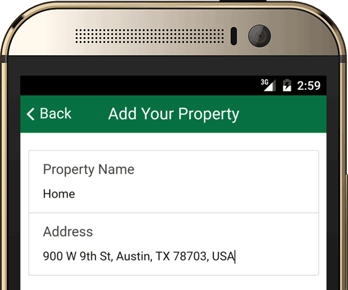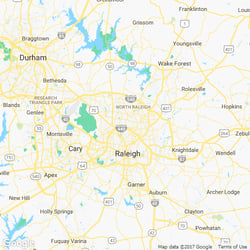Raleigh Lawn Care
Easily book one of Raleigh's top lawn services with the click of a button.

How LawnStarter works
Get started in under 5 minutes

View Pricing

Choose your service date

Let our pros do the work
Why LawnStarter?
Happy customers all over Raleigh



Raleigh Lawn Care Facts & Resources
It's January, way too early to be worried about your lawn!
Local lawn care resources
Native Plants to Raleigh
Wood-anemone

Carolina lupine

Orange coneflower

Northern maidenhair fern

Eastern bluestar

Lawn Care Facts
| Average Yard Size | 6,964 sq ft |
| Average Mowing Price | $46.95 |
| Average Customer Review | 4.9 / 5.0 |
| Weekly Cuts | 84.0% |
| Biweekly Cuts | 12.0% |
| Monthly Cuts | 4.0% |
| Lawns Fertilized | 12.0% |
| Lawns with Leaf Removal | 11.0% |
| Aerated Lawns | 15.0% |
| Yards with Cleanups | 11.0% |
| Days That Are Sunny | 58% |
An app for lawn care, seriously? You betcha! Stay up‑to‑date on your lawn wherever you go.

Easy, Affordable Lawn Care Services in Raleigh
Raleigh has hot, humid summers and chilly winters, which makes lawn care difficult year-round. There's an easier way. Leave the mower in the garage and let LawnStarter keep your grass trim, green, and healthy. With a simple call or click, we connect you with local pros to enhance your curb appeal.
Our Lawn Care Services: Mowing, trimming, edging, lawn fertilization, aeration, and dethatching services are just a few of the ways we keep lawns looking great. Have an overgrown lawn or a yard full of leaves? We also offer lawn cleanups and leaf removal.
Best Grass Types: Kentucky bluegrass, fine fescue, perennial ryegrass, and tall fescue.
Mowing Frequency: Your lawn should be mowed at least once every week, but your exact mowing schedule depends on temperature, fertility, humidity, season, and your grass's natural growth rate. Just remember to cut just one-third off the top of your grass blades -- cutting more than that could harm the grass blades and stunt their growth.
Other Outdoor Services We Offer: Do you need leaf removal, tree trimming, or gutter cleaning? Our pros check all those boxes. We also have professional landscapers who can plant flower beds, build arbors, create backyard patios, and tend gardens.
LawnStarter makes having a beautiful lawn easy. Call, click, or download our app for an instant quote.
Raleigh, NC Top 3 Lawn Care Pros



Recent Reviews
We encourage feedback from all customers to ensure we are delivering the best service possible.












Service Recommendations in Raleigh
LawnStarter pros will let you know what your lawn needs. Here are some recent recommendations for lawn care services in Raleigh, NC.
Top Raleigh, NC Lawn Services of January 2025



